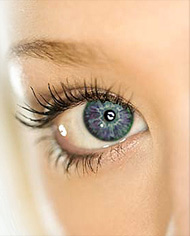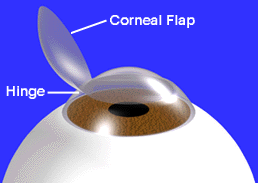
Package Details:
Pre-Op Examination includes:
- Ophthalmology Exam
- Optometry Exam
- Intraocular Pressure Measurement
- Dilated Fundus Examination
- Corneal Topography
- Corneal Elevation Topography
- Wavefront Aberrometry
- Corneal Wavefront Aberrometry
- Corneal Pachymetry
- Pupilometry

Surgery includes:
- Pre-operative medical and anesthetic preparation
- Surgical Procedure (with video recording for the patient)
- Post-Op Eyedrop Package (antibiotic, anti-inflammatory and lubricant drops)
Post-Op Visits includes:
- Ophthalmology Exam
- Optometry Exam
- Corneal Topography
Hotel includes:
- Standard Hotel Room
- Breakfast
- Broadband Internet Access
Assist-Card Travel Insurance includes:

- Trip Cancellation (1,000 dlls)
- CASHLESS Emergency Medical ($50,000 dlls)
- Trip Interruption (1,500 dlls)
- Trip Delay ($750 - up to $200 a day)
- Missed Connection (750 dlls)
- Pre-Existing Condition Coverage (included)
- Travel Misfortune (AD & D) (10,000 dlls) (does not include air travel)
- Emergency Evacuation (500,000 dlls)
DAY 1:
- Arrival at the Clinic from the Airport
- Clinic Tour
- Complete Pre-Op Examination
- Departure to Hotel
DAY 2:
- Breakfast at Hotel
- Departure to Clinic for Surgery
- Departure to Hotel
DAY 3:
- Early Breakfast
- Post-Op Visit at the Clinic
- Departure for Scenic Drive along the Coast to Wine Country
- Return late afternoon to Tijuana/ Hotel
DAY 4:
- Early Breakfast
- Departure for Scenic Drive along the “Rumorosa” towards the Cave Painting Archeological Site, Desert and Mexicali.
- Return late afternoon to Tijuana/ Hotel.
DAY 5:
- Early Breakfast
- Post-Op Visit at the Clinic
- Departure to Airport

Not everyone qualifies for laser eye surgery. Military personnel, pilots and others with an occupational need for perfect vision should exercise caution, because it is impossible to guarantee a perfect outcome.
In addition, the FDA lists several medical conditions as contraindications to surgery.
Contraindications are reasons why a person absolutely should not have surgery. They include:
- Pregnancy and nursing
- Immune deficiency: HIV, etc.
- Collagen vascular diseases: rheumatoid arthritis, lupus, etc.
- Keratoconus: a degenerative corneal disease
- Certain medications: Accutane, amiodarone and triptan family migraine treatments
While contraindications are almost always a “black or white”, “yes or no” issue, warnings represent more of a gray zone and surgery is sometimes still possible. Common warnings include:
- Diabetes
- Herpes Keratitis: herpes infection of the cornea
- Severe dry eye disease
- Severe allergies
Precautions are other issues that necessitate caution. Precautions include:
- Age: Patients must be at least 18 to 21 years old, depending on the laser system.
- Stability: Laser vision correction should be avoided if the eyeglass prescription is still changing.
- Corneal disease, abnormality or prior surgery
- Thin corneas
- Large pupils
- Glaucoma
- Uveitis: inflammation of the inside of the eye
- Blepharitis: inflammation of the eyelid margin
In addition to the issues that affect one’s candidacy for surgery, laser vision correction patients should be aware of the potential side effects.
More common side effects include:
- Delayed epithelial healing: slow healing the eye’s surface (typically after a flapless procedure)
- Diffuse lamellar keratitis: inflammation under a flap
- Dry eyes
- Epithelial ingrowth: migration of the surface epithelium underneath the flap
- Flap striae: wrinkles in the flap
- Glare and halos around lights at night
- Haze: superficial corneal opacification found almost exclusively with flapless procedures
- Over or undercorrection necessitating a second treatment
- Pain and light sensitivity: common within the first 3 to 5 days after a flapless procedure
Less common side effects include:
- Loss of best-corrected vision: postoperative vision with glasses that is not as clear as the preoperative vision was with glasses
- Decentration of the laser treatment
- Dislocated flaps
- Ectasia: a region of the cornea that becomes progressively more distorted
- Bad flaps: creation of an irregularly shaped flap that causes abortion of the procedure
Infection